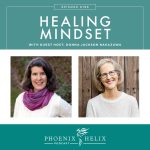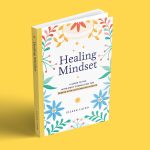A Personal Autoimmune Q&A
This is a very special episode featuring two of my colleagues and friends: Dr. Terry Wahls & Dr. Sarah Ballantyne! I’ve known these wonderful women for over a decade now. They’re both powerful leaders in the autoimmune community. They are also autoimmune warriors themselves. Today, we’re doing an Autoimmune Q&A: I’ll be asking us all a series of questions about our personal experiences with autoimmune disease, and our best tips for all of you!
Listen to the Show
- Subscribe to my podcast through your favorite podcast app: iTunes, Google, TuneIn, Spotify, Amazon, etc.
- You can also listen to the episode right here through the player below, and if you subscribe to my newsletter you’ll get notified of future episodes.
Podcast: Play in new window | Download
Show Notes
- Intro (0:00)
- Meet Our Guests
- Dr. Terry Wahls is a physician, an author, a professor of medicine, a clinical researcher, and the woman behind The Wahls Protocol. After being diagnosed with multiple sclerosis, her health rapidly declined. Fearing she would become bedridden, she started researching nutrition and lifestyle interventions for autoimmune health and experienced dramatic results. She went from a wheelchair to a bicycle. Her desire to help others led her to develop The Wahls Protocol which is now supported by peer-reviewed scientific research and has helped thousands of people improve their health.
- Dr. Sarah Ballantyne is a New York Times bestselling author and a research scientist by training, which infuses all of the work she does. Many of you know her as The Paleo Mom where she wrote for over a decade about the science behind paleo principles and how diet and lifestyle impact health. Now, she has created a new website called Nutrivore, which is a comprehensive resource for nutrient density. Her goal is to help everyone meet their nutritional needs, no matter what diet they follow. She believes in nourishment, not judgment. Like Terry, she’s also experienced dramatic improvements in her health, allowing her to thrive with Hashimoto’s and two autoimmune skin conditions.
- Eileen Laird (your podcast host) has lived with rheumatoid arthritis for over a decade now. I started Phoenix Helix as a way to connect with others who were seeking an empowered approach to autoimmune health. My goal has been always been to uplift this community and be uplifted myself at the same time. I’ve written over 700 articles, 4 books, and recorded over 200 podcasts. Like Terry and Sarah, my health has improved exponentially from what I’ve learned over the past 12 years.
- Welcoming a New Podcast Sponsor – Adapt Naturals (4:04)
- Adapt Naturals is a supplement company founded on 15 years of clinical expertise by globally-renowned expert, Chris Kresser. Most supplements are made with cheap, synthetic ingredients, and they’re also poorly formulated. They don’t contain enough of what we do need (or too much of what we don’t). Chris Kresser created a supplement line with the opposite goals.
- Each one is formulated to fill a biological need, using natural ingredients rather than synthetic, and each ingredient is maximized for your body’s absorption. They are designed to tackle a range of health issues at the root – from easing stress to clearing brain fog.
- Adapt Naturals has seven carefully chosen supplements in their product line:
- A multivitamin to support optimal health
- Vitamin d3 and k2 to help balance the immune system
- An omega+ anti-inflammatory supplement
- An organ meat blend for nutrient density
- Vitamin E+ to slow the aging process
- Magnesium to support many vital processes in our body
- And a blend of 8 superfood mushrooms for deep focus, sustained energy, and a sense of calm and balance throughout the day.
- Use the code HELIX to save 15% off your order. Shop here: AdaptNaturals.com/Helix.
- Favorite Nutritious Food That We Used to Hate (5:45)
- Terry: Liver. Her mother cooked it once a week when she was a child, but it was overcooked with a texture of cardboard and if she complained, she got a second helping. She has since learned that if you don’t overcook it, in addition to being one of the most nutrient-dense foods, liver can also be delicious. She has two favorite recipes. One is to simply bake it in the oven with strips of bacon on top, being careful not to overcook it. She likes it medium-rare (still a little pink in the center). She tries to make enough to have leftovers, which she then turns into a pate which she’ll put on a collard or kale leaf with some guacamole and hot sauce. Not only her children, but her children’s friends loved those wraps when they weren’t told it was liver.
- Sarah: Kale. She grew up poor, and kale was a vegetable that grew wild in their garden, so when they had no groceries in the house, they always ate kale. It was very bitter, and as an adult she refused to eat kale until she learned about the importance of nutrition in healing (and kale is one of the most nutrient-dense foods). An important lesson for her was learning that she could prepare healthy foods so they were also delicious. She didn’t have to suffer for nutrition. Her favorite way to prepare kale is a simple massaged kale salad. Lightly massage the kale leaves with sea salt and olive oil, and top with dried cranberries and pine nuts. (Resource video: Massage Raw Kale for Tender Greens.)
- Eileen: Seafood. I grew up on Cape Cod and my mother cooked fish every Friday. I hated it, and the only way I could get it down was to swallow each bite with milk without chewing. As an adult, my taste buds expanded in many ways, but I still hated the briny flavor and smell of seafood. If my husband wanted to cook salmon, I made him cook it on the grill and eat it outside! After developing RA, I learned of the importance of seafood’s omega-3 fatty acids which are anti-inflammatory, so I set about finding a way to get this nutrient dense food into my diet. I started with mild-flavored fish and added it to soup. When I got used to that, I expanded to stronger flavored fish like salmon, choosing recipes that combined it with other flavorful ingredients. In time, I came to love the flavor of seafood and I can now eat it straight-up. I add it to my lunch salads every week.
- Favorite Food Indulgence (12:11)
- Sarah: Desserts. She has a sweet tooth, and she does best on a healing diet if she allows herself a gluten-free baked treat a couple of times a week, and her daughter loves to bake. It’s tricky because she has a history of disordered eating and it’s not healthy for her to over-restrict her diet, and at the same time, if she eats too many desserts it will cause symptoms, especially fibromyalgia pain. She’s not perfect at finding this balance. When her lifestyle is dialed in (good stress management, nutrition, sleep, etc.) it’s easier for her to manage her cravings. When her lifestyle is more chaotic, the cravings intensify. In those moments, she has the awareness that overindulgence in desserts will lead to inflammation the next day, but awareness doesn’t necessarily lead to changed behavior. Like all of us, she’s human. (Resource podcast: Emotional Eating.)
- Terry: Pawpaws. Since she follows a ketogenic diet, she doesn’t eat a lot of fruit, but once a year, pawpaws come into season (her favorite fruit). She’ll enjoy them for the next three weeks until the season is over. This will take her out of ketosis, but it’s absolutely worth it to her. Pawpaws don’t cause her any pain. There are some foods she never indulges in because they cause her debilitating neurological pain (gluten, dairy, eggs). If she’s eating outside the home, she does two things to help protect herself from exposure. One is taking digestive enzymes. She also carries prednisone. If she experiences an accidental exposure, her first symptom is a strange feeling in her face. Within a few hours, that will progress to horrific trigeminal neuralgia pain if she doesn’t interrupt it with prednisone. (Instagram Video: Terry and her pawpaws.)
- Eileen: Store-bought treats. Like Sarah, I have a sweet tooth, but sugar is inflammatory for me. Rheumatoid arthritis can have skin manifestations, and for me, they’re directly connected to sugar. When I indulge in a store-bought treat (even if it’s a paleo brand), I will get bumps on my fingers. If I stop at one treat, those bumps will go away, so it’s a symptom that stays minor and allows me to indulge. However, if I have daily sugary treats, the bumps will multiply, my joint inflammation will increase, and my autoimmune activity overall will spike. At first, I was resentful to have a symptom that is so reactive to sugar, but now I’m grateful to have a signal from my body that’s so clear, and allows me to make choices that prevent the inflammation from escalating.
- Resource: Food Mindset Series.
- Favorite Forms of Exercise (24:31)
- Terry: She loves being outdoors, so her favorite forms of exercise are biking and nordic hiking/walking. However, she’s 67 years old, so she prioritizes strength training 3 times/week for bone health and muscle mass. In the winter, she swims in her indoor pool. And on days when she doesn’t feel up to strenuous exercise, she does 3-10 minutes of simple stretching and balance exercises. The most important thing is choosing forms of exercise that you enjoy. That’s the only way you’ll want to keep doing them. For Terry, exercise is a favorite part of her day.
- Sarah: Similar to Terry, Sarah does a blend of outdoor exercise (a daily hike with her dog) and strength training 3 times/week. This routine was born after the pandemic. After 14 months of not going to the gym, she lost a lot of strength and needed to rebuild. She got a puppy, and they built their hiking endurance together. When she went back to the gym, she also slowly rebuilt her strength. Now, she fluctuates the intensity of her exercise based on how she feels. If she’s feeling great, she’ll hike 4 miles and do power lifting at the gym. If she’s not feeling as great, she might walk in the neighborhood and lift lighter weights at the gym. It’s been awhile since she’s had a severe autoimmune flare, but during those times, she stops exercising and prioritizes rest and sleep. One thing she’s learned over her years of living with autoimmune disease is to listen to her body. Her goal with exercise is to feel good both during the exercise and afterward, without any severe muscle soreness or fatigue.
- Eileen: Like Terry and Sarah, I love being outdoors as well. Walking is my favorite form of daily exercise. I live in the Blue Ridge Mountains, so nature is right outside my door. That blend of nature, fresh air, and movement is beneficial to my mind, body, and spirit. I also try to strength train, but with RA, that’s challenging. Most traditional forms of strength training cause my joints to flare. What works best for me is slow-motion strength training. On my days off, if I’m feeling great, I’ll go hiking or kayaking for more time outdoors. During flares, I may decide that meditation is more beneficial than movement. During mild flares or just days when I’m tired, I choose ways to move that are comfortable for my body. I have a list of exercises on my phone that I’ve discovered over the years, and no matter how I’m feeling, there is something on that list I can do.
- Resources:
- Thank You to Our Podcast Sponsor – Luminance Skincare (34:04)
- Today I want to highlight their Premium Peptide Collection. This podcast often focuses on the importance of nutrition, and collagen is a key nutrient that our bodies need. As we age, we make less collagen, and that leads to a loss of elasticity in our skin. This premium skincare line contains plant proteins and nutrients that encourage collagen production in the deepest layers of our skin. The premium facial serum absorbs quickly and completely into those deep layers and leaves your skin feeling very soft. The premium moisturizer is designed to nourish and moisturize the upper layers of your skin. The premium eye cream is designed to gently soften wrinkles. And the premium antioxidant mask eliminates skin damaging free radicals that collect in your skin through the day.
- Use the code HELIX for 10% off your order. (You can also use the HELIX coupon on any Luminance product, not just the Premium Peptide Collection.)
- Whereas conventional skincare products are full of chemicals that can hurt our bodies, Luminance is made from ingredients that nourish. Their products are natural, organic, wildcrafted, non-GMO, and gluten-free (and they’re even made in a dedicated gluten-free facility). It’s the cleanest skincare anywhere! And everything is handmade in small batches within the United States.
- They have a complete face and body care line, including cleansers, toners, moisturizers, masks, acne serum, lip balms, haircare, sunscreen, handcrafted soaps, and more.
- Favorite Ways to Manage Stress (35:52)
- Sarah: Her morning hike with her dog has become a daily habit that’s easy to maintain for two reasons: it’s 100% enjoyable, and it also makes the rest of her day better. She’s more productive at work, she’s more patient with her teenage daughters, and she’s more resilient to daily stressors. It’s worked better than any other stress management technique she’s tried. She thinks it’s because it ticks so many boxes at once: time in nature, playtime with her dog, unplugged time, solitude, and movement.
- Terry: She doesn’t see stress as the problem. The problem is an absence of relaxation, gratitude, and joy. She has so many goals she wants to achieve, it can be easy to forget to schedule time for those other things, so she strives to make it a priority. In 2017, she was able to reduce her work hours which allowed more time for her morning routine (workout, meditation, and sauna). It makes a huge difference in her day. During the pandemic when life was especially stressful, they started a gratitude practice at the dinner table to remind them of the good things in life. Now, she does a gratitude practice in bed before she falls asleep. And like Sarah, her dog is a great source of joy.
- Eileen: For me, taking time offline is essential. Every day, I make sure I have some unplugged time, even if it’s a small amount. The internet feels very loud to me; it’s a constant input, so my brain craves silence. Whether I go for a walk without my phone, or meditate in silence, or just gaze out the window and let my mind drift, it’s beneficial. Then, one day a week, I am 100% offline for the entire day. I don’t touch any computerized device: smartphone, desktop, or laptop. I reach a level of relaxation that day that’s deeper than any other day, and it works like a reboot for my nervous system and immune system.
- Resources:
- Top Tips for Navigating Autoimmune Flares (43:35)
- Terry: Try to identify your “prodrome signal” – that’s the first sign that a flare is coming. For Terry, it’s a specific sensation in her face. For someone else it might be a skin symptom, or fatigue, or low-grade pain, or another mild symptom. When you know what yours is, that’s a signal from your body that it needs care, and often you have the chance to prevent a severe flare if you address it at this level.
- Sarah: Her first signal is fibromyalgia foot pain in the morning when she first gets out of bed. It’s a sign that her body needs rest. She may take a nap during the day or try to go to bed earlier that night. Most of her flares are stress-driven, and if she doesn’t pay attention to this first signal, she’ll usually start eating more sugar in response to the stress, which interrupts her sleep and creates a snowball effect that leads to a bigger flare. If she does experience a severe flare, a few days in bed is her quickest way out.
- Eileen: If you do experience a severe flare, whether it comes out of nowhere (which sometimes happens) or escalates from a minor flare, I recommend a blend of self-compassion and surrender. Too often during flares, negative self-talk fills our minds whether we blame ourselves and/or feel powerless to do anything to help. Those negative thoughts are actually inflammatory, and if we can replace them with kinder thoughts instead (thinking of ourselves like a child who needs care), that can start to calm our nervous system. Surrender is a word that often has negative connotations, but it’s not about giving up. It’s about accepting the moment as it is, which allows us to be proactive in addressing it. When I feel a flare coming on, my instinct is often to resist the flare and try to power through, as if ignoring my body’s signals will make them go away. This has never worked! (Sarah said she relates to this instinct). So, listen to your body and ask what it needs…what you need.
- Resource: Ep. 143 – How to Survive an Autoimmune Flare.
- Our Greatest Challenge & Greatest Gift from Autoimmune Disease (49:25)
- Sarah: The greatest challenge was being undiagnosed with Hashimoto’s for 25 years. That led to weight gain that didn’t response to diet or exercise, and that impacted her relationship with food and her body over a lifetime. She’s done a lot of healing over the past few years and is in a more body-positive place, but it’s a journey, and her history of disordered eating can be triggered in times of stress. So, the greatest challenge is having an external symptom that’s stigmatized in our society, and the mental challenge of coping with that. The greatest gifts are her other symptoms: pain and fatigue, because they’ve made her stronger. She’s learned that she can persevere through anything.
- Terry: Her father developed mononeuritis multiplex, an autoimmune condition that affects the nerves of the legs. His symptoms began at age 45, progressing over time until they were quite horrific by the time he died at age 65. When Terry developed trigeminal neuralgia (electrical face pain as part of her MS symptoms), she thought she would have her father’s future. That vision of the future was the greatest challenge, but it also led to the greatest gift: the creation of The Wahls Protocol. As she created a better healing environment for herself, symptoms went away that she thought were permanent. She no longer has intractable face pain; neuralgia symptoms are now rare. She’s grateful not only for the benefits to her own health, but the opportunity to help other people with autoimmune disease improve their health as well. Without MS, she would have had a much smaller positive impact on the world.
- Eileen: For me, the greatest challenge is the sensitivity that comes with autoimmune disease. I wish I could eat whatever I want and do whatever I want without health consequences. It’s my inner child’s greatest wish. That said, autoimmune sensitivity has also led to the greatest gift. I no longer take my body for granted. I listen to my body instead of ignoring it. I understand that it deserves my care. And I have developed a more unconditional self-love, where perfection isn’t a requirement.
- Terry Wahls Clinical Research (57:53)
- Terry is currently recruiting participants for a study comparing a ketogenic diet, a paleo diet, and a standard diet for relapsing remitting MS. If you would like to participate or know someone who does, you can learn more here: Terrywahls.com/msstudy.
- Even if you aren’t eligible for this study but would like to participate in a future study, you can join the patient registry through the link above and be notified of future clinical trials.
- Resource: Ep. 145 – Wahls Protocol Research Update.
- Sarah Ballantyne’s Nutrivore Website (59:09)
- Nutrivore’s goal is to help people get the nutrients they need from the foods they eat. It’s not a diet. Instead, it’s knowledge that can be applied to any dietary template. Learn more at Nutrivore.com.
- Resource: Ep. 208 – Nutrient Deficiencies and Healing Diets.
- Outro (1:01:23)
- Dr. Terry Wahls: You can connect with her through Terrywahls.com. She’s also active on Facebook and Instagram.
- Dr. Sarah Ballantyne: You can connect with her through Nutrivore.com. She’s also active on TikTok, Facebook, and Instagram.
- Eileen (your podcast host) is the author of multiple books, written to help people thrive with autoimmune disease. Learn more on the Books Page.
- If you like this podcast, follow or subscribe through your favorite podcast app. You can also subscribe to Eileen’s monthly newsletter.
- Check out the entire archive of podcast episodes.
You May Also Be Interested In
Spreading the Word
If you like the podcast, please leave a positive review in iTunes. It would mean the world to me, and also helps others find the podcast. Here are some quick instructions using your iPhone:
- If you are already subscribed to my podcast: (1) Click the purple podcast icon. (2) At the bottom of the screen, click Library. (3) At the top of the screen, click Shows. (4) Click the Phoenix Helix podcast image. (5) Scroll down the page, and you’ll see Ratings and Reviews. Scroll down a little bit more and click on Write a Review. This will bring up the review screen. Tap 5 stars (if you love the podcast), and then click in the title box, and it will bring up the keyboard. Enter a title and short review. (6) Click Send in the upper right corner. (7) Thank you! Positive reviews give the podcast a higher search ranking in iTunes, helping people find it and letting them know it’s a quality podcast and worth their time to listen.
- If you haven’t subscribed to my podcast: (1) Click the purple podcast icon. (2) In the lower right corner, click the magnifying class. (3) Type Phoenix Helix in the search box. (4) Click the podcast cover in the Show list. (5) If you’d like to subscribe, click the + sign at the top of the screen. (6) To write a review, scroll down the page, and you’ll see Ratings and Reviews. Scroll down a little bit more and click on Write a Review. This will bring up the review screen. Tap 5 stars (if you love the podcast), and then click in the title box, and it will bring up the keyboard. Enter a title and short review. (7) Click Send in the upper right corner. (8) Thank you! Positive reviews give the podcast a higher search ranking in iTunes, helping people find it and letting them know it’s a quality podcast and worth their time to listen.








